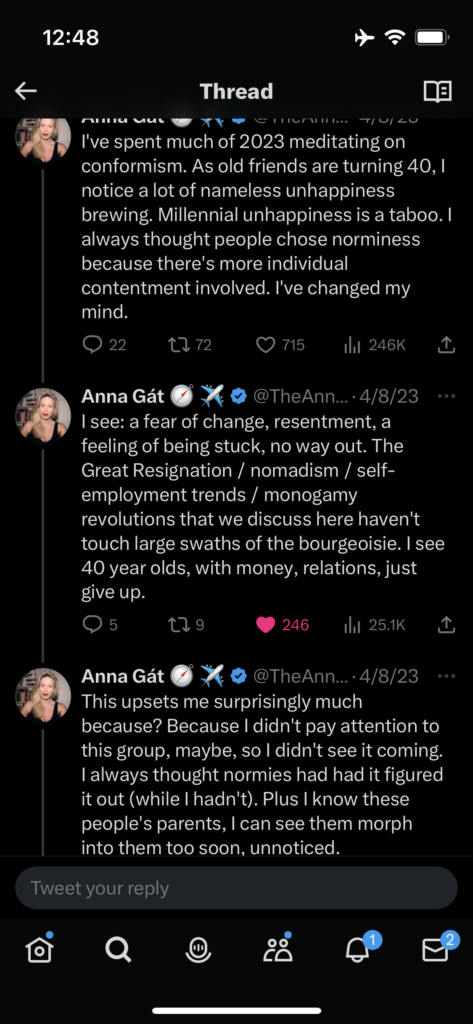I’ve been writing in public, on and off, for my entire adult life. First it was goofy tween personal made for myself on hosted social media like Livejournal & Geocities.
My younger years were filled with sundry hosted publishers that taught you just enough HTML & JavaScript to be a foot soldier in the ISP and browser war, but never quite encouraged you to gain the more foundational tools to host yourself independent of their network effects. Closed gardens of that era gave you a small plot of digital land to tend in their giant kingdoms. I never felt like I could homestead outside of their cozy walls on my own domain.
Those plots of writing yielded fruit though. And while it feels as if I only saved a small fraction of my writing over the years, I have hundreds of thousands of words.
I do have an archive of my collegiate blog which later turned into one of the first professional fashion blogs and spawned my first startup. I’ve got 872 straight days of writing saved from this daily experiment. And while I mostly auto-delete my Tweets I’ve also downloaded the remaining archives.
Why am I mentioning my written records? Because making a synthetic version of your intellectual self that is trained through your writing is now a possibility. I’d been introduced to Andrew Huberman’s “ask me anything” chatbot that was made through Dexa.AI and I thought I’d like that but for my own writing. So any founder or LP can get a sense of who I am by asking questions at their leisure.
We’ve come so far that it is an almost quotidian project for developers if you can provide enough training data and it looks as if I may have enough. Just by tweeting my interest I was introduced to chatbase.co, ThreeSigma.ai, Authory (great way to consolidate your content) and the possibility of knocking out a langchain on Replit. Aren’t my Twitter friends cool?
A big thank you to 2021 me and 2022 me which wrote so damn much. Click those links for my “best of” round ups. Hopefully I’ll have a synthetic self soon so you will have the option of asking it instead of hyperlink rabbit holing down endless inference threads.
My buddy Sean and I landed on “Phenia” as this synth’s name. He’s tinkering already. My husband Alex is already wondering what the heck is going on. But I see a pattern emerging. Phenia as in apophenia. A synthetic self capable of pattern recognition towards an inward spiral of infinite synthetic selves? Not a bad choice for a name at all. We can figure out a chat bot in a bit.








